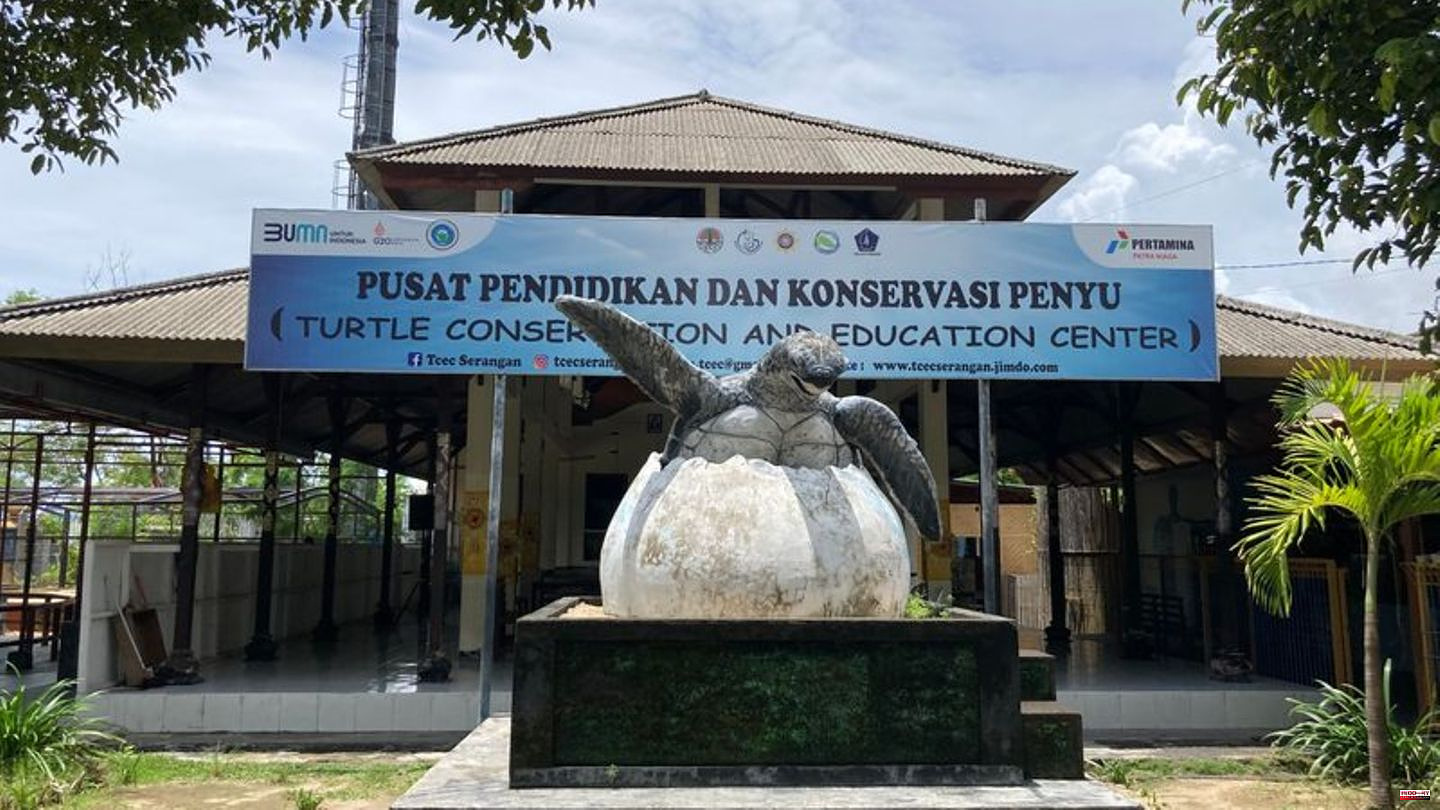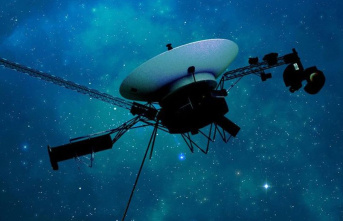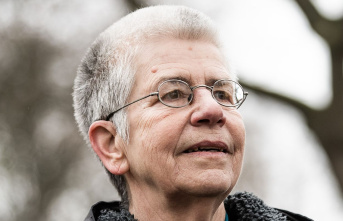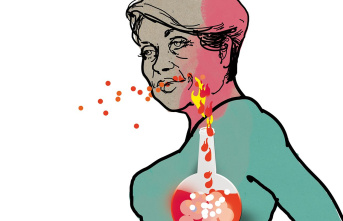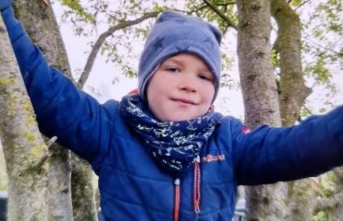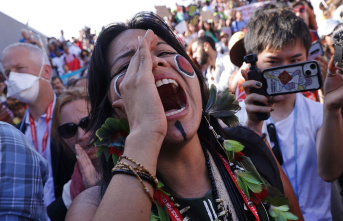A green sea turtle slowly lifts its head out of the shallow water. She lies sluggishly in a tiled pool and hardly moves. The big beast with its mighty armor is injured. It got caught in a fishing net in the ocean off Bali. Part of his left front fin had to be amputated. Now it should recover and regain its strength.
Deadly Rituals
The reptile is not alone - in a good dozen tanks at the "Turtle Conservation And Education Center" (TCEC) sanctuary, other sea turtles are recovering from injuries they sustained in their natural habitat by man-made objects. These include boat propellers and fishing hooks or nets. But that's not the only problem faced by the primeval animals on the Indonesian holiday island.
Bali is celebrated as the island of the gods. The inhabitants practice their own kind of Hinduism with special rituals. Offerings of rice, flowers, fruit and aromatic incense sticks are everywhere. What is less well known is that sea turtles are an important part of religious ceremonies and had to die for the gods. Because the endangered animals that have populated the planet for 150 million years play a major role in Hindu mythology. During the rituals, they were slashed alive and body parts buried in the foundations of the temples.
Other dangers for the turtles
It is mainly thanks to the TCEC that specimens are no longer fished out of the sea for these practices and that the animals provided almost always remain alive at the ceremony. Since 2006, the center on the small island of Serangan, which is connected to the Balinese mainland by a dam, has been taking care of injured animals that are nursed back to health here. Above all, however, it has been possible to sensitize both the population and tourists to the animals.
"Sea turtles are threatened in a variety of ways," says Eddy Wayan, who has been supporting the center as a volunteer since 2009. "They are mainly hunted for their meat, which is used to make soups, skewers and lawar, a typical dish made from vegetables, spices and meat," says the 40-year-old. But the shells of hawksbill turtles in particular are also used to make souvenirs such as jewelry, sunglasses, musical instruments, combs, buttons or cases for smartphones.
Boat propellers and fishing hooks often seriously injure the reptiles. If they are lucky, they will be found and taken to the TCEC. "We have a 24-hour hotline where we can be contacted about wounded animals and their location," says Wayan, looking lovingly at a "patient" who is craning his head out of the water.
What animal rights activists do
The center cares for three of the seven extant species: green sea turtles, hawksbill turtles and olive ridley turtles. They should find rest and health in their tanks, regularly monitored by a veterinarian. Some are missing whole parts of the tank due to accidents in the ocean. Others had the ends of their wounded fins removed. Eating plastic was fatal to other animals.
Until a few years ago, Serangan was the hub of the illegal turtle trade. Ida Bagus Windia Adnyana, better known by his nickname Gus Win, made a significant contribution to the fact that this is no longer the case today. The 57-year-old is a lecturer in veterinary medicine in the Balinese capital Denpasar and regularly conducts training courses on sea turtle conservation management.
Since the late 1990s, Gus Win has worked for WWF Indonesia, where until 2015 he led the campaign to protect sea turtles to stop the illegal trade in the animals, especially in Bali. The TCEC was created for this purpose. "The center harnesses the potential of education, ecotourism, conservation and research to give endangered turtles another chance at serangan," he says. Whole school classes come to learn about the animals.
Outcomes of the intervention
In the meantime, the result is impressive: the illegal trade in sea turtles has decreased significantly in Bali, and most Balinese now know that turtles should not be consumed. And especially important: The TCEC provides turtles for certain rituals in consultation with Hindu priests. Everything is strictly regulated and the animals may not be killed.
The TCEC also has a dedicated area for turtle eggs rescued from beaches. Here the young animals can hatch in safety. After a few days, they are released into the sea. The center is financed by donations. For a few euros, visitors can symbolically "adopt" a baby turtle and release it into the wild. "But not many survive, there are simply a lot of natural enemies such as predatory fish," explains Wayan.
All the other armored patients also return to the sea when they are strong enough again - proverbially not an easy task for the helpers. "It takes five or six strong men to lift a specimen," says Wayan. An adult green sea turtle can weigh around 180 kilograms.
Why sea turtles are so important
Sea turtles are referred to as a "key species". Removing a keystone species from a habitat disrupts the natural order, says Gus Win. Hawksbill turtles, for example, help the reefs by eating sponges that compete with the coral for space. Sea turtles help beaches with nesting because the nutrients left behind by eggs and non-surviving hatchlings are important for coastal vegetation. And the juveniles themselves are food for many fish and birds.
"All animals are special, but the sea turtle is the only animal on earth that connects the open ocean and land," Gus Win points out. "These animals play an important role because everything in the world is connected. Healthy oceans need sea turtles."

